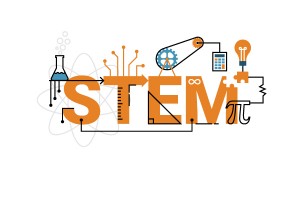 Science should be included as a key indicator in measuring student performance when the state creates its new school accountability system, the California Chamber of Commerce and other groups are emphasizing to the California State Board of Education.
Science should be included as a key indicator in measuring student performance when the state creates its new school accountability system, the California Chamber of Commerce and other groups are emphasizing to the California State Board of Education.
The education board met this week to review staff recommendations for measurements to use to identify when schools and districts need help.
The CalChamber and coalition asked the board to commit to creating a science placeholder in the evaluation rubric for the Local Control Funding Formula (LCFF) while the new science assessment is being designed and tested.
That commitment and ensuring the assessments are built to be useful tools to local educators would emphasize the importance of providing access to high quality education for students in the state, particularly students underserved by the current education system, the CalChamber and coalition stated in a letter to the education board.
The science assessment results are expected to be available in 2020.
The CalChamber joined organizations representing school boards, science teachers, education advocates and Silicon Valley companies in making the case for science education.
New Jobs
 Jobs requiring science, technology, engineering and mathematics (STEM) make up more than a quarter of all new job openings, including many of the highest paid occupations, the letter points out. Moreover, a report by a state task force estimates that by 2018, 92% of STEM jobs will require at least some postsecondary education and training.
Jobs requiring science, technology, engineering and mathematics (STEM) make up more than a quarter of all new job openings, including many of the highest paid occupations, the letter points out. Moreover, a report by a state task force estimates that by 2018, 92% of STEM jobs will require at least some postsecondary education and training.
“We must prepare our students for these career and economic opportunities, and fully implementing the Next Generation Science Standards will help us strengthen student preparation to promote their success in college study and careers in the science and engineering fields,” the coalition letter states.
Science Education Inequity
The higher emphasis on mathematics and English language assessments and instruction over the last 15 years have relegated science education to the sidelines, resulting in significant inequity in science education opportunities and quality in California public schools.
Teachers in the kindergarten through third grade report spending only 19 minutes a day on science, while those in grades 4 through 6 report spending 24 minutes, according to the Knowledge Matters campaign.
Another report found that affluent schools were more than twice as likely to have science initiatives compared to the state’s poorest schools (High Hopes – Few Opportunities, The Center for the Future of Teaching and Learning at WestEd).
That report called for including science education in all elementary schools, increasing the amount of time students spend on science learning and increasing the emphasis on student academic achievement in science.
National assessment data show continuing achievement gaps in California, with 39% of white eighth grade students scoring proficient in science compared with just 8% of African American students and 11% of Hispanic students in 2011.
Opportunity
As California redesigns its accountability system, there is an opportunity to do so in a way that broadens the curriculum, the coalition letter points out.
Including the science placeholder in the evaluation rubric “will effectively signal to the field that science assessment results will be included once they are available in 2020 and will thereby support efforts to promote” local implementation of the Next Generation Science Standards, the letter states.
Identifying science as a key indicator will ensure that schools or Local Education Agencies that are struggling to meet performance and expectations for improvement in science will receive additional support and assistance in that area.
Board Staff Recommendation
The five metrics the education board staff is recommending be used to identify schools and districts in need of assistance and intervention are:
• Student test scores on the Common Core tests in math and English language arts;
• Progress of English learners toward proficiency in English;
• High school graduation rates;
• An added weight for two markers of a student’s progress through schools: test scores in Grade 3 reading and Grade 8 math; and
• Student suspension rates at various grade levels.
Next Steps
The education board is expected to adopt the initial phase of the LCFF evaluation rubrics at its September meeting. The board states that it expects this year’s version of the rubrics will evolve through the first couple of years of implementation.

